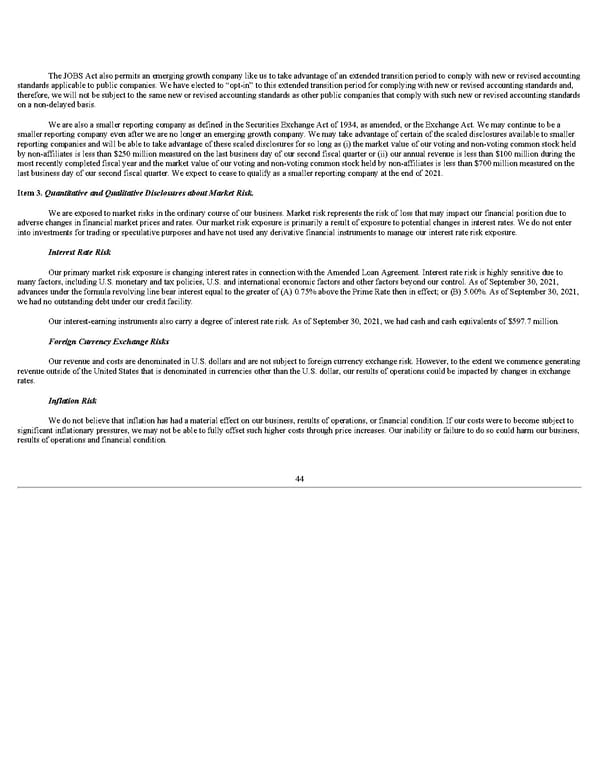The JOBS Act also permits an emerging growth company like us to take advantage of an extended transition period to comply with new or revised accounting standards applicable to public companies. We have elected to “opt-in” to this extended transition period for complying with new or revised accounting standards and, therefore, we will not be subject to the same new or revised accounting standards as other public companies that comply with such new or revised accounting standards on a non-delayed basis. We are also a smaller reporting company as defined in the Securities Exchange Act of 1934, as amended, or the Exchange Act. We may continue to be a smaller reporting company even after we are no longer an emerging growth company. We may take advantage of certain of the scaled disclosures available to smaller reporting companies and will be able to take advantage of these scaled disclosures for so long as (i) the market value of our voting and non-voting common stock held by non-affiliates is less than $250 million measured on the last business day of our second fiscal quarter or (ii) our annual revenue is less than $100 million during the most recently completed fiscal year and the market value of our voting and non-voting common stock held by non-affiliates is less than $700 million measured on the last business day of our second fiscal quarter. We expect to cease to qualify as a smaller reporting company at the end of 2021. Item 3. Quantitative and Qualitative Disclosures about Market Risk. We are exposed to market risks in the ordinary course of our business. Market risk represents the risk of loss that may impact our financial position due to adverse changes in financial market prices and rates. Our market risk exposure is primarily a result of exposure to potential changes in interest rates. We do not enter into investments for trading or speculative purposes and have not used any derivative financial instruments to manage our interest rate risk exposure. Interest Rate Risk Our primary market risk exposure is changing interest rates in connection with the Amended Loan Agreement. Interest rate risk is highly sensitive due to many factors, including U.S. monetary and tax policies, U.S. and international economic factors and other factors beyond our control. As of September 30, 2021, advances under the formula revolving line bear interest equal to the greater of (A) 0.75% above the Prime Rate then in effect; or (B) 5.00%. As of September 30, 2021, we had no outstanding debt under our credit facility. Our interest-earning instruments also carry a degree of interest rate risk. As of September 30, 2021, we had cash and cash equivalents of $597.7 million. Foreign Currency Exchange Risks Our revenue and costs are denominated in U.S. dollars and are not subject to foreign currency exchange risk. However, to the extent we commence generating revenue outside of the United States that is denominated in currencies other than the U.S. dollar, our results of operations could be impacted by changes in exchange rates. Inflation Risk We do not believe that inflation has had a material effect on our business, results of operations, or financial condition. If our costs were to become subject to significant inflationary pressures, we may not be able to fully offset such higher costs through price increases. Our inability or failure to do so could harm our business, results of operations and financial condition. 44
 Q3 2021 10Q Page 49 Page 51
Q3 2021 10Q Page 49 Page 51